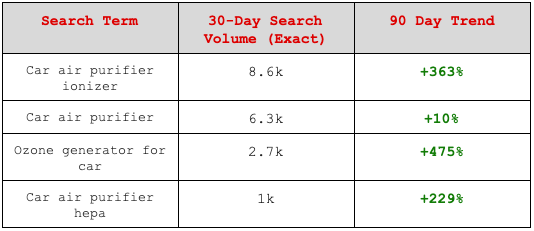nlopchantamang.com
The Future of Mobility in a Post-COVID World
Aja Frost @ajavuu

The Signal: How soon after lockdowns end will you feel comfortable stepping into a cramped subway car? Early indications are that the ways people get around in a post-COVID world are shifting. Chinese traffic data shows that daily traffic in early April (once the country had recovered from the worst of its COVID-19 outbreak) was consistently above that of a year prior. Car purchases in Wuhan have also rebounded. All of which suggests that people will continue to avoid public transportation post-COVID, instead favoring private vehicle usage.
Public transit systems around the world will be forced to operate at reduced capacity to stay safe for commuters. LA’s Metro system, for example, is running its modified Sunday service every day of the week in response to fewer travelers. But even if we take into account a reduction in daily commuters on account of the WFH trend, there will still be billions of people who will need to move around on a daily basis.
While this dynamic could push many people into private car ownership, affordability will be a major stumbling block. We spoke with Thomas McLennan, a senior policy advisor at the British Vehicle Rental & Leasing Association, who predicts that we’ll see a sharp increase in consumers’ leasing and sharing vehicles, as opposed to owning them.
McLennan told us about Karshare, a new peer-to-peer car-sharing project underway in the UK, which enables people who are working from home to allow essential workers in need of transportation to borrow their vehicles.
The Opportunity: Mobility in a post-COVID world will be multifaceted. Right now, it’s hard to imagine what cities on the move will look like (we still have a long way to go -- this nifty mobility index shows that only 5% of Washington DC is on the move compared to usual). But with new dynamics come new opportunities.
Used-Car Leasing: Car leases as a portion of retail vehicle sales in the US dropped sharply during the last recession, from 18.4% in 2008 to 12.7% in 2009. However, they rebounded only a year later, and by 2019 leasing accounted for 30% of retail sales.
The vast majority of people lease new cars. But you can lease a used car for roughly 35% less than the typical monthly payment on a new car lease. In a world where more people are tightening their belts, look for those lower-cost alternatives to take off.
It is estimated that in the US, 15m+ vehicles up to 5 years old will return to the market in 2020 through retail, lease, and rental channels. Industry insiders at Frost & Sullivan predict that this injection of used cars into the market will prompt a surge in used car leasing.
If you Google “how to lease a used car in the US,” you will be directed to lease swapping sites (such as SwapALease, which has 700k monthly visits, according to SimilarWeb), or advised to look into used-car leasing, which can save you thousands of dollars.
But car dealers don’t like to advertise those deals (they make more money on new car sales), and there are opportunities to connect buyers and sellers. Entrepreneurs could create an aggregator platform that plugs into dealerships offering used-car leasing, saving the consumer from contacting multiple dealerships directly.
Car Health, Wellness, and Wellbeing (HWW): Early indications are that single occupancy shared mobility modes (e.g., bikeshares) are already making a rapid recovery. Many believe that the same will be true for rideshare platforms such as Uber and Lyft, at least in the medium- to long-term after the virus dissipates.
A key focus for the transport sector going forward, and rideshares in particular, will be hygiene and sanitation. As we mentioned above, the inside of your car has far more mold and bacteria than the average toilet seat. It’s no wonder -- when’s the last time you gave it a thorough cleaning?
As Sarwant Singh, the Global Practice Head of Mobility at Frost & Sullivan predicts, “If the previous decade was all about the automotive industry going ‘green’, the next decade will be about keeping drivers and passengers in the ‘pink’ of health.”
The car HWW trend, which was picking up speed before COIVD-19, is being thrust into the limelight. An Indian startup, Droom, has developed an antimicrobial surface protector treatment for cars and bikes, which it claims is effective against droplet-based viruses for up to 3 months. Sanity System in the UK has developed a portable “ozone generator” that claims to remove bacteria and allergens from vehicles. Gardx has also developed a portable anti-bacterial deep cleaning solution.
Search interest for air ionizers is exploding. On Amazon, search interest for air ionizers and purifiers for cars in particular, such as this device, is also on the up, according to JungleScout:

In addition to capitalizing on these sanitation products and devices, there is an opportunity for entrepreneurs to help Uber and Lyft drivers signal their hygiene “score” to riders. One idea: Develop a system allowing drivers to indicate when their car was last cleaned or sanitized, and how many people have been in the car on a given day. Drivers could score extra points for having an ionizer, or supplying hand sanitizer or other cleaning tools.
Leave a Comment